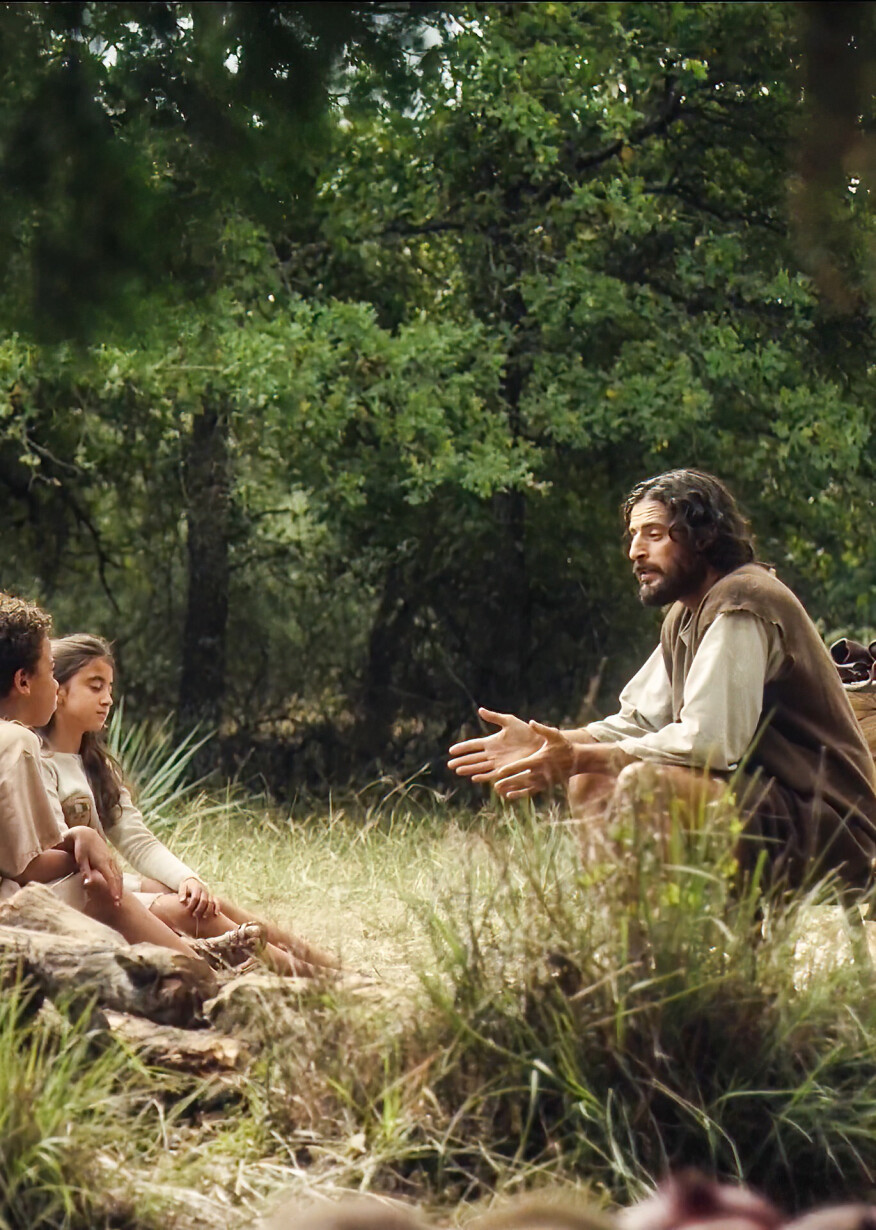What Did Jesus Teach About Fear and Anxiety?
Fear and anxiety are part of the human experience. Whether it’s worry about the future, fear of failure, or feeling overwhelmed by circumstances, these emotions touch us all. The good news is that Jesus didn’t ignore fear; he spoke directly to it, and more importantly, he showed us how to walk through it.
In the Bible, we find not only his words, but also stories of how he responded to people weighed down by fear and worry.

Jesus Calms the Storm
One evening, Jesus and his disciples crossed the Sea of Galilee. Suddenly, a fierce storm arose. Waves crashed into the boat, and the disciples were terrified, certain they were about to die.
Meanwhile, Jesus was asleep. When the disciples woke him, shouting, “Teacher, don’t you care if we drown?” (verse 38). He stood up, rebuked the wind, and said to the waves, “Quiet! Be still!” (verse 39). Instantly, the storm calmed.
Then he asked his disciples, “Why are you so afraid? Do you still have no faith?” (verse 40).
This story shows us that fear is natural. Even the disciples, who had walked closely with Jesus, panicked. But Jesus reminded them that God is greater than any storm. His presence brings calm, both to the sea and to the anxious heart.
Read this story in the Bible
Read this story in the Bible
That day when evening came, he said to his disciples, “Let us go over to the other side.” Leaving the crowd behind, they took him along, just as he was, in the boat. There were also other boats with him. A furious squall came up, and the waves broke over the boat, so that it was nearly swamped. Jesus was in the stern, sleeping on a cushion. The disciples woke him and said to him, “Teacher, don’t you care if we drown?” He got up, rebuked the wind and said to the waves, “Quiet! Be still!” Then the wind died down and it was completely calm. He said to his disciples, “Why are you so afraid? Do you still have no faith?” They were terrified and asked each other, “Who is this? Even the wind and the waves obey him!”
> Mark 4:35–41

Jesus Speaks About Worry
In one of Jesus’ most famous speeches, the Sermon on the Mount, Jesus addressed one of the most common struggles: worrying about daily needs. He said, “Do not worry about your life, what you will eat or drink; or about your body, what you will wear” (verse 25).
Instead, he pointed to the birds of the air and the flowers of the field. Birds don’t plant or harvest, yet God feeds them. Flowers don’t labor or spin, yet they are clothed in beauty. “Are you not much more valuable than they?” Jesus asked (verse 26).
Here, Jesus didn’t dismiss the reality of human needs. Instead, he invited his listeners to trust God as a loving Father who provides. Anxiety often comes from focusing on what we can’t control. Jesus teaches us to shift our gaze, seeking God’s kingdom first and trusting Him with the rest.
Read this story in the Bible
Read this story in the Bible
“Therefore I tell you, do not worry about your life, what you will eat or drink; or about your body, what you will wear. Is not life more than food, and the body more than clothes? Look at the birds of the air; they do not sow or reap or store away in barns, and yet your heavenly Father feeds them. Are you not much more valuable than they? Can any one of you by worrying add a single hour to your life?
“And why do you worry about clothes? See how the flowers of the field grow. They do not labor or spin. Yet I tell you that not even Solomon in all his splendor was dressed like one of these. If that is how God clothes the grass of the field, which is here today and tomorrow is thrown into the fire, will he not much more clothe you—you of little faith?
So do not worry, saying, ‘What shall we eat?’ or ‘What shall we drink?’ or ‘What shall we wear?’ For the pagans run after all these things, and your heavenly Father knows that you need them. But seek first his kingdom and his righteousness, and all these things will be given to you as well. Therefore do not worry about tomorrow, for tomorrow will worry about itself. Each day has enough trouble of its own.”
Jesus Comforts His Disciples
The night before his crucifixion, Jesus spoke tenderly to his disciples, who were troubled and afraid. He told them, “Do not let your hearts be troubled. You believe in God; believe also in me.” John 14:1
Later in the same chapter, he added: “Peace I leave with you; my peace I give you. I do not give to you as the world gives. Do not let your hearts be troubled and do not be afraid.” John 14:27
Jesus knew suffering and uncertainty were coming, both for himself and his friends. But he promised them peace. Not the kind that depends on perfect circumstances, but a peace rooted in his presence.
Do you feel like you are missing peace? Let this song soothe your soul.
Jesus in the Garden of Gethsemane
Perhaps the most moving moment is when Jesus himself faced deep anguish. In the Garden of Gethsemane, just before his arrest, he told his disciples, “My soul is overwhelmed with sorrow to the point of death” (verse 38).
Jesus prayed honestly: “My Father, if it is possible, may this cup be taken from me. Yet not as I will, but as You will” (verse 39).
Here, Jesus models how to face fear: not by denying it, but by bringing it honestly to God. He prayed with raw emotion, even sweating drops of blood in his distress (see Luke 22:44) . Yet he also surrendered, trusting God’s plan.
This story reminds us that Jesus understands our anxiety. He knows what it’s like to feel overwhelmed, and he shows us that prayer and surrender open the way to peace.
Read this story in the Bible
Read this story in the Bible
Then Jesus went with his disciples to a place called Gethsemane, and he said to them, “Sit here while I go over there and pray.” He took Peter and the two sons of Zebedee along with him, and he began to be sorrowful and troubled. Then he said to them, “My soul is overwhelmed with sorrow to the point of death. Stay here and keep watch with me.” Going a little farther, he fell with his face to the ground and prayed, “My Father, if it is possible, may this cup be taken from me. Yet not as I will, but as you will.”
Then he returned to his disciples and found them sleeping. “Couldn’t you men keep watch with me for one hour?” he asked Peter. “Watch and pray so that you will not fall into temptation. The spirit is willing, but the flesh is weak.” He went away a second time and prayed, “My Father, if it is not possible for this cup to be taken away unless I drink it, may your will be done.”
When he came back, he again found them sleeping, because their eyes were heavy. So he left them and went away once more and prayed the third time, saying the same thing. Then he returned to the disciples and said to them, “Are you still sleeping and resting? Look, the hour has come, and the Son of Man is delivered into the hands of sinners. Rise! Let us go! Here comes my betrayer!”
Jesus Heals the Anxious and Fearful
Throughout the Gospels, people came to Jesus with fears that consumed them. Fear of illness, fear of rejection, fear of losing loved ones. Every time, Jesus met them with compassion.
A bleeding woman (Mark 5:25–34) feared shame and rejection. When she touched Jesus’ cloak, He stopped, looked at her, and said, “Daughter, your faith has healed you. Go in peace” (verse 34).
The disciples, after the resurrection (John 20:19), hid behind locked doors, afraid of what would happen next. Jesus came and stood among them, saying, “Peace be with you.”
Again and again, Jesus met fear with peace, showing that God’s love is stronger than anxiety.
Be inspired by the TV series The Chosen and find out how characters like Matthew and Mary Magdalene struggled with anxiety.

What We Learn From Jesus About Fear and Anxiety
From these stories, we see a clear picture of how Jesus teaches us to face fear:
Acknowledge fear honestly
Remember God’s presence
Pray and surrender
Trust in God’s care
Fear and anxiety are real, and even people close to Jesus experienced them. But in every story, Jesus shows us that fear doesn’t have the final word. His presence brings calm, his words bring comfort, and his love brings peace.
If you are struggling with anxiety today, take courage: Jesus knows what it feels like to be overwhelmed. He will meet you in your storm, in your worry, and in your darkest night. And just like the disciples, you may hear Him speak to your heart: “Peace be with you.” John 14:27

Hope Encountered
Imagine how your life and mental health could radically change in just 15 minutes a day. Whether it's a feeling of sadness or a battle with depression, we are here to tell you that there is hope.
Hope Encountered is a 21-day guide, with daily encouragement, scriptures, and suggestions that are easy to implement at your own pace, step by step.




